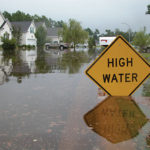
(NAPSI)—Traumatic experiences happen-but when they happen to children, it can affect their view of the world, their sense of safety, their development, and even their longer-term physical and mental health.
According to the Substance Abuse and Mental Health Services Administration (SAMHSA), more than two-thirds of children reported at least one traumatic experience by age 16. While not every child will be traumatized from a difficult experience, some potentially traumatic events could include abuse, neglect, disaster, violence (physical, sexual and community), bullying or school violence, terrorism, war, serious illness or accident, military family−related stress, human trafficking or the sudden loss of a parent or loved one.
The numbers are staggering:
* One in four high school students were in a physical fight.
* One in five high school students experienced bullying at school, and one in six were cyberbullied.
* 54 percent of families in the United States have been affected by disaster.
* 19 percent of injured and 12 percent of physically ill youth have post-traumatic stress disorder, a debilitating mental health disorder.
The effects of trauma, when left untreated, can have a profound impact on a child. Some of the common responses in the aftermath include difficulty sleeping, isolation, trouble focusing, and even angry and aggressive behavior. Imagine, then, a traumatized child trying to learn in a classroom—wanting to be alone, distracted by memories of the trauma, and possibly having intense responses to teachers and students. It is important to understand what may stem from the trauma so that behavior shifts can be linked with what happened and appropriate support can be in place. If that doesn’t happen, school performance, friendships and healthy development can be jeopardized.
When Trauma Is Left Unaddressed
At times, signs that a mental health concern may be emerging go unrecognized. For some children and families, it can be difficult to reach out for help with mental health. In part, this could be because traumatic experiences can be viewed as something to get through and forget about and are not given the same level of attention as a physical injury. However, the seriousness of traumatic experiences is shifting as more and more people recognize that getting help for traumatic experiences is essential for living a healthy, productive and long life.
Between 1995 and 1997, the Adverse Childhood Experiences (ACE) Study (www.cdc.gov/violenceprevention/acestudy/index.html) was conducted by the Centers for Disease Control and Prevention and Kaiser Permanente. The study examined the effect of “adverse experiences,” such as traumas, experienced in childhood, as reported by adult patients of a large health plan. The study revealed that for people who have five or more adverse childhood experiences, their life span was shortened by approximately 25 years. This is believed to be largely due to coping behaviors that are often used in adolescents and adult life to manage the emotional pain and social disconnection, but can compromise health.
The ACE Study is just one of many examples that demonstrate the importance of prevention and action. When prevention efforts fail, responding quickly to ensure safety and establish support is very important to the health and future of children.
What You Can Do
While every child is different, there are some things you can do to help in the aftermath of trauma. Assuring and reassuring the child of safety will help to reduce anxiety and stress. Make sure the child knows that whatever happened isn’t his or her fault, as kids often blame themselves when something completely out of their control takes place. Being patient and listening without judgment will help the child to cope with what has happened, while giving you important insight into how the child is doing and managing what took place. And if you have concerns for your child’s well-being or he/she is not improving over time, consider seeking help from a trained professional. When needed, a mental health professional trained in evidence-based trauma treatment can help children and families cope and move toward recovery. Ask your pediatrician, family physician, school counselor or clergy member for a referral.
SAMHSA offers some practical tools that can be helpful to parents, guardians, caregivers and teachers when a child may have been traumatized—and some that are specific to the kind of traumatic exposure (e.g., mass violence, disaster and bullying). They can be found at www.samhsa.gov/child-trauma/understanding-child-trauma. This page brings together useful information, from recognizing the signs of traumatic stress to where to find a mental health provider or other support.
Children exposed to trauma may have been a target of bullying or their behaviors may make them targets of bullying. Information specific to the trauma or distress associated with bullying can be found at www.StopBullying.gov. SAMHSA also developed a free app to help prevent bullying called KnowBullying, which can be found at http://store.samhsa.gov/apps/knowbullying.
On the Net:North American Precis Syndicate, Inc.(NAPSI)






